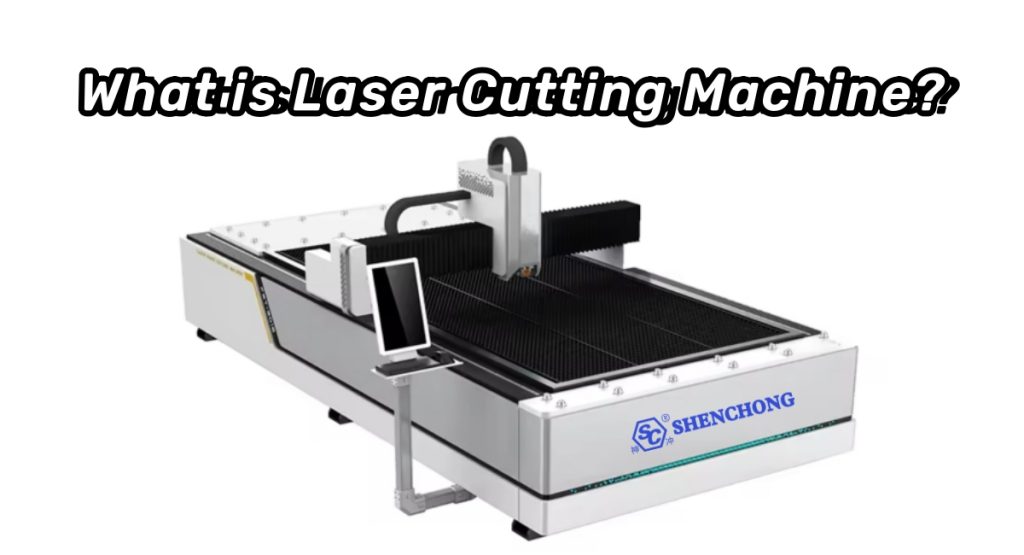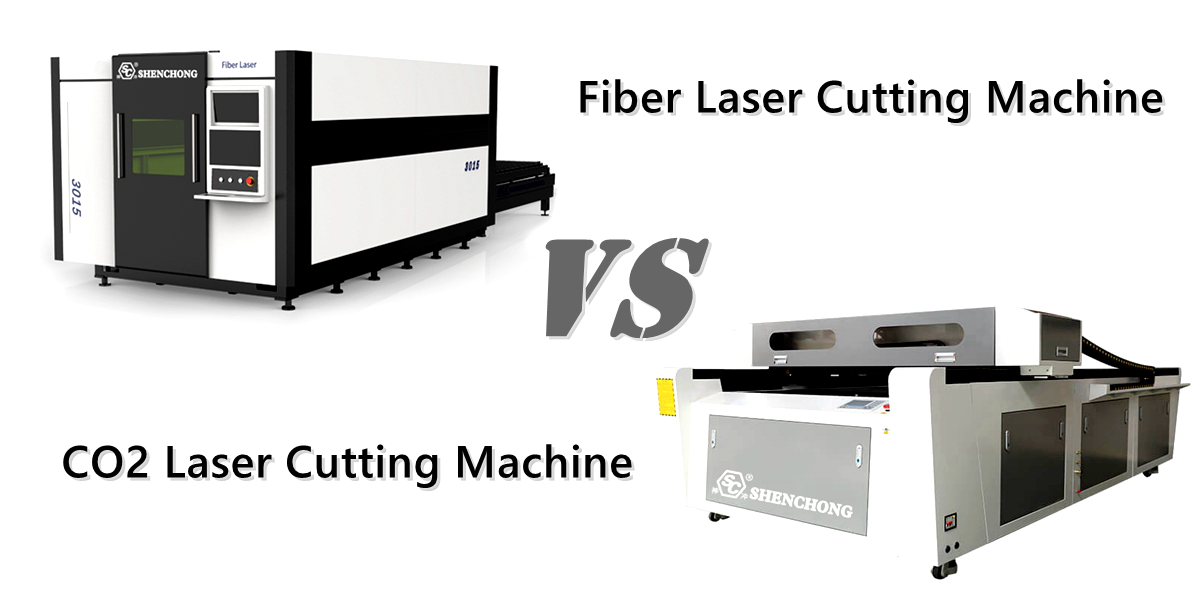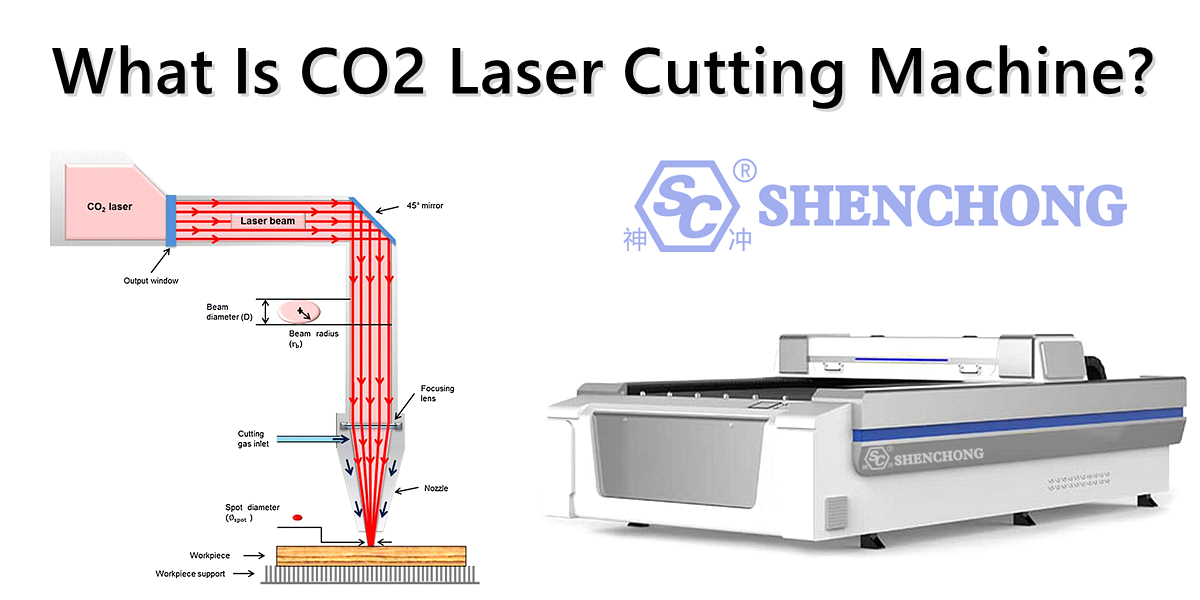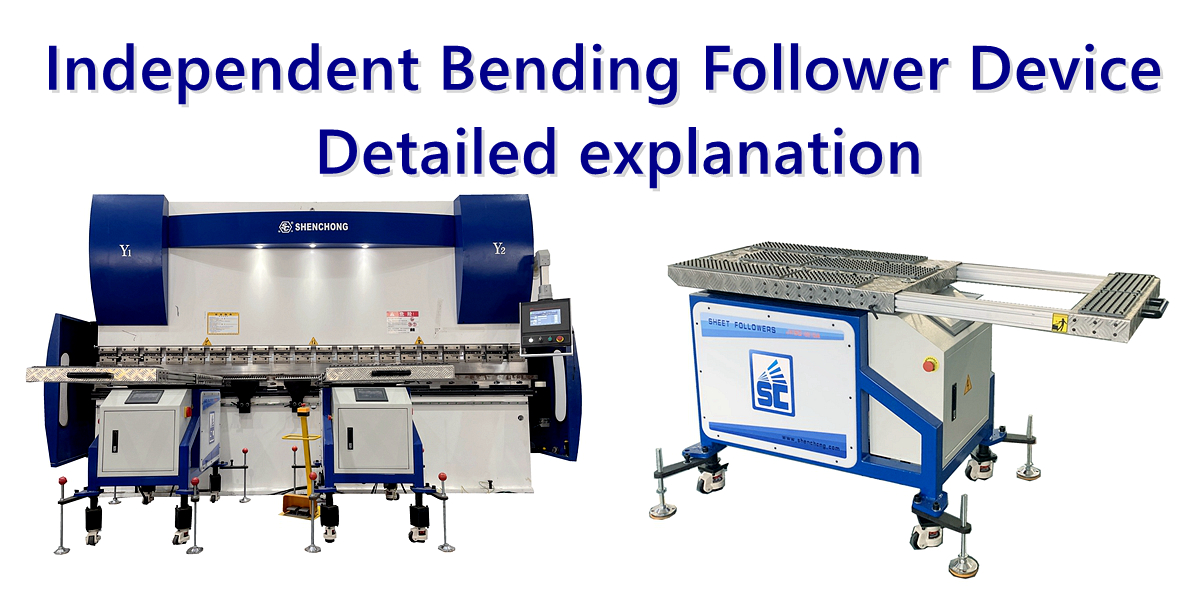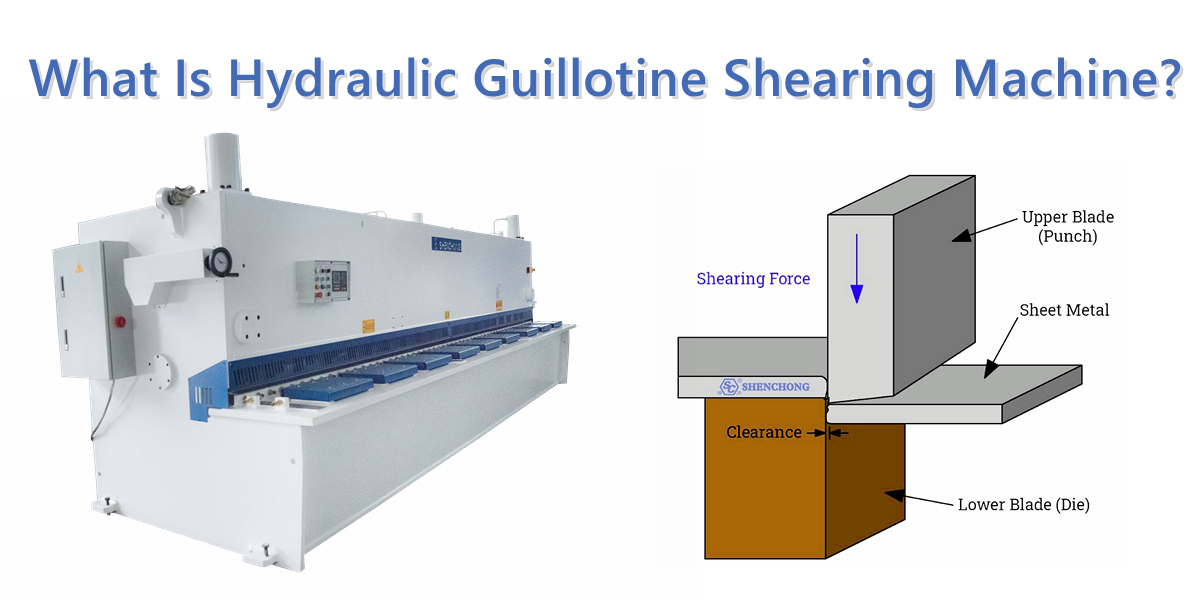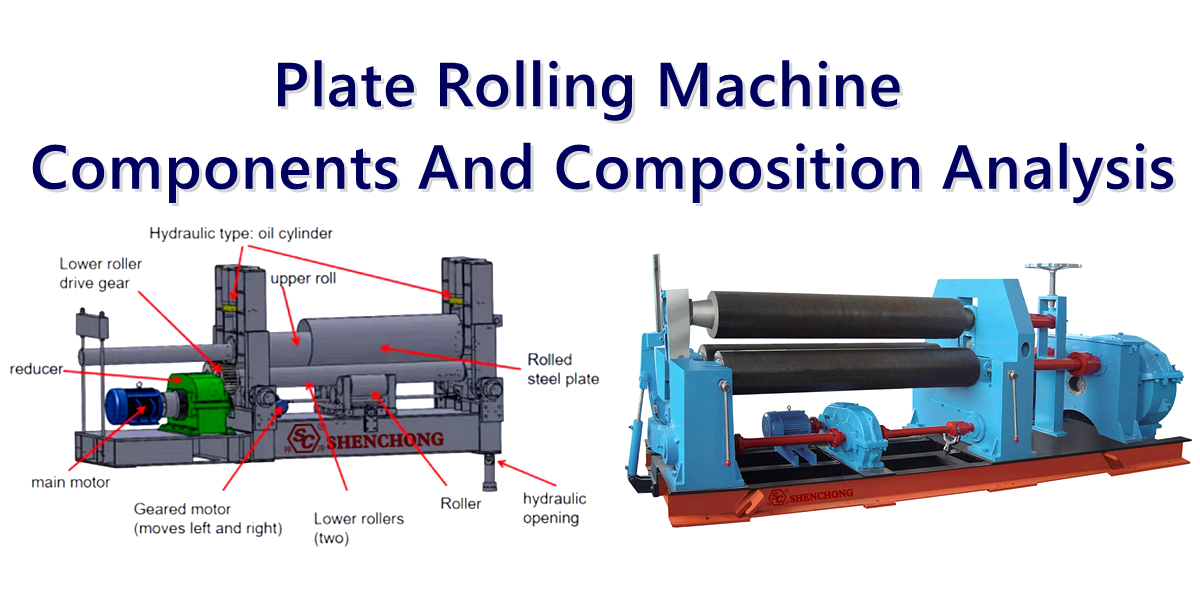Currently the laser cutting machine is the most popular metal cutting machine in the sheet metal forming machine industry. With the technological breakthrough of fiber laser cutting machines in China from 2010, the laser cutting machine price dramatically decrease, and more and more clients choose buy laser cutting machine instead of other traditional metal cutting machines, such as plasma cutting machine, plate shearing machine and waterjet cutting machine, etc.
Brief Introduction to Laser Cutting Machine
A laser cutting machine focuses the laser emitted from the laser into a high-power density laser beam through an optical path system. The laser beam irradiates the surface of the workpiece, causing it to reach its melting or boiling point, while the high-pressure gas coaxial with the beam blows away the melted or vaporized metal.
As the beam of light moves relative to the workpiece, it ultimately forms a cutting seam in the material, thereby achieving the purpose of cutting.
Laser cutting processing replaces traditional mechanical blades with invisible beams of light. It has the characteristics of high precision, fast cutting, not limited to cutting pattern limitations, automatic layout saving materials, smooth cutting, and low processing costs. It will gradually improve or replace traditional metal cutting equipment.
Main Features of Laser Cutting Machines
- The mechanical part of the laser blade does not come into contact with the workpiece, so it will not cause scratches on the surface of the workpiece during operation.
- Laser cutting speed is fast, the incision is smooth and flat, and generally does not require subsequent processing.
- Cutting heat affected zone is small, plate deformation is small, and cutting seam is narrow (0.1mm~0.3mm).
- The incision has no mechanical stress and no shear burrs.
- High machining accuracy, good repeatability, and no damage to the material surface.
- CNC programming can process any flat drawing, and can cut large whole boards without the need for molds, which is economical and time-saving.
Principle Of Laser Cutting Machine
Laser is a type of light that, like other natural light, is generated by the transition of atoms (molecules or ions, etc.). But it is different from ordinary light in that the laser only relies on spontaneous emission for a very short period of time, and the subsequent process is completely determined by excitation radiation. Therefore, the laser has a very pure color, almost no divergent directionality, extremely high luminous intensity, and high coherence.
Laser cutting is achieved by using the high-power density energy generated by laser focusing. Under the control of a computer, the laser is discharged through pulses to output a controlled repetitive high-frequency pulsed laser, forming a beam of light with a certain frequency and pulse width. The pulsed laser beam is transmitted and reflected through the optical path and focused on the surface of the processed object through a focusing lens group, forming fine, high-energy density light spots. The focal spots are located near the surface to be processed and melt or vaporize the processed material at high temperatures in an instant. Each high-energy laser pulse instantly sprays a small hole on the surface of the object. Under computer control, the laser processing head and the processed material move continuously relative to each other according to the pre drawn shape, thus processing the object into the desired shape.
The process parameters (cutting speed, laser power, gas pressure, etc.) and motion trajectory during cutting are controlled by the CNC system, and the slag at the cutting point is blown away by auxiliary gas at a certain pressure.
Laser Cutting Machine Composition Part
The laser cutting machine system generally consists of a laser generator, (external) beam transmission components, a workbench (machine tool), a microcomputer numerical control cabinet, a cooler, and a computer (hardware and software).
1) Machine tool host part: The machine tool part of the laser cutting machine, which is the mechanical part that realizes the movement of the X, Y, and Z axes, including the cutting work platform. Used to place the cut workpiece and move it correctly and accurately according to the control program, usually driven by a servo motor.
2) Laser generator: a device that generates a laser light source. For the use of laser cutting, except for a few occasions where YAG solid-state lasers are used, the vast majority use CO2 gas lasers with high electro-optical conversion efficiency and the ability to output high power before 2010. Due to the high requirements for beam quality in laser cutting, not all lasers can be used for cutting. Gaussian mode is suitable for CO2 lasers below 1500W, low order mode CO2 lasers between 100W-3000W, and multi-mode CO2 lasers above 3000W. However, after 2010, since the development of fiber lasers in China, C02 laser cutting machine Gradually replaced by fiber laser cutting machine. Currently the fiber laser cutting machine has become the mainstream choice in the laser market.
3) External optical path: a refracting mirror used to guide the laser in the desired direction. To ensure that the beam path does not malfunction, all mirrors must be protected by protective covers and clean positive pressure protective gas should be introduced to protect the lenses from contamination. A set of high-performance lenses will focus a beam of light without divergence angle into an infinitely small spot. Generally, a lens with a focal length of 5.0 inches is used. 7.5 inch lenses are only used for materials>12mm thick.
4) CNC system: controls the machine tool to achieve X, Y, and Z axis movement, while also controlling the output power of the laser.
5) Stabilized power supply: connected between the laser, CNC machine tool, and power supply system. Mainly serves to prevent interference from external power grids.
6) Cutting head: mainly includes components such as cavity, focusing lens seat, focusing mirror, capacitive sensor, and auxiliary gas nozzle. The cutting head driving device is used to drive the cutting head to move along the Z-axis direction according to the program, and is composed of servo motors and transmission components such as screws or gears.
7) Operation console: used to control the entire cutting device’s working process.
8) Chiller unit: used to cool the laser generator. A laser is a device that converts electrical energy into light energy. For example, a CO2 gas laser typically has a conversion rate of 20%, and the remaining energy is converted into heat. Cooling water takes away excess heat to maintain the normal operation of the laser generator. The chiller unit also cools the external light path reflector and focusing mirror of the machine tool to ensure stable beam transmission quality and effectively prevent deformation or explosion caused by high lens temperature.
9) Gas cylinder: including the working medium gas cylinder and auxiliary gas cylinder of the laser cutting machine, used to supplement industrial gas for laser vibration and auxiliary gas for supplying cutting heads.
10) Air compressors and storage tanks: provide and store compressed air.
11) Air cooling dryer and filter: used to supply clean dry air to the laser generator and beam path to maintain the normal operation of the path and reflector.
12) Exhaust dust collector: Extract the smoke and dust generated during processing, and filter them to ensure that the exhaust gas emissions meet environmental protection standards.
13) Slag removal machine: removes leftover materials and waste materials generated during processing.
Laser Generator
CO2 gas laser
Since the introduction of laser technology for cutting metal sheets, CO2 lasers used to dominated the market from 1995-2005. CO2 laser light sources require a lot of energy to excite nitrogen molecules to collide with CO2 molecules (laser gas), prompting them to emit photons, ultimately forming a laser beam that can cut through metals. The molecular activity inside the resonant cavity releases both light and heat, which requires a cooling system to cool the laser gas. This means that more energy needs to be consumed during the cooling process, further reducing energy efficiency.
Fiber laser
From 2010, fiber laser technology has been breakthrough and fiber laser begin to dominate the laser cutting market. Machines using fiber lasers have a smaller footprint, and the volume of the laser source and cooling system is also smaller; There is no laser gas pipeline, and there is no need to adjust the lenses. Fiber laser sources with a power of 2kw or 3kw only require 50% of the energy consumption of 4kw or 6kw CO2 laser sources to achieve the same performance, with faster speed, lower energy consumption, and less impact on the environment. Currently, more and more laser cutting machine factory launch 10000 watt level sheet fiber laser cutting machine, which can become the substitution of plasma cutting machine or flame cutting machine.
The fiber laser uses solid-state diodes to pump the molecules inside the double clad ytterbium doped fiber. The stimulated emitted light passes through the fiber core multiple times, and then forms a laser output through the transmission fiber to the cutting focusing head. Since all collisions between molecules occur within the fiber, there is no need for laser gas, resulting in a significant reduction in energy required – about one-third of that of a CO2 laser. Due to the less heat generated, the volume of the cooler can be correspondingly reduced. In summary, when achieving the same performance, the overall energy consumption of fiber lasers is 70% lower than that of CO2 lasers.
Market Prospects Of Laser Cutting Machines
The market prospects of laser cutting machines are broad, mainly due to the following factors:
- Consumer demand and technological development in the manufacturing industry: With the development of technologies such as Industry 4.0 and artificial intelligence, laser cutting machines will achieve automation and digital processing operations, improving processing efficiency and accuracy.
- Innovation in laser light source technology: The cutting speed and cost of laser cutting machines will be improved, and the rapid development of industrial fiber lasers and disk lasers will bring about technological changes.
- Wide application field: laser cutting machine is suitable for cutting various materials, including metal and non-metallic materials, and is widely used in automobile, aerospace, electronic communication, computer and other fields.
- 4. Future market expectations: It is expected that the global laser cutting machine market size will reach 10 billion US dollars by 2025, with the Chinese market size reaching 4 billion US dollars, and market demand will continue to maintain high-speed growth.
In summary, the market prospects of laser cutting machines are very broad, with broad application prospects, and will become one of the key technologies in the future intelligent manufacturing era.
Industry Applications
The application of metal laser cutting machines is very extensive, covering many industries and is one of the essential equipment for many enterprises. Among them are the production of advertising signs (mainly stainless steel logos and identification cutting), sheet metal processing (sheet metal processing basically includes all metal materials, which generally include bending, polishing, etc., and cutting is one of the most important processes), The production of chassis and cabinets (usually involves carbon steel or stainless steel, and mainly involves two cutting processes: bending and cutting), spring plates (which belong to the precision machining process), subway parts, elevator casings, mechanical equipment casings, and kitchen utensils (mostly stainless steel). Widely used in sheet metal processing, advertising signage production, high and low voltage electrical cabinet production, mechanical parts, kitchenware, automobiles, machinery, metal handicrafts, saw blades, electrical parts, glasses industry, spring blades, circuit boards, electric kettles, medical microelectronics, hardware, knives and measuring tools, and other industries.
The application of laser processing technology in the advertising industry mainly includes two working methods: laser cutting and laser engraving.
Laser Engraving
Laser engraving: mainly performed on the surface of objects, divided into two types: bitmap engraving and vector engraving:
Bitmap engraving: We first hang the graphics we need to carve in Photoshop and convert them to monochrome BMP format. Then, we open the graphics file in a dedicated laser engraving and cutting software. Based on the materials we process, we can set appropriate parameters, and then click run. The laser engraving machine will carve according to the dot matrix effect generated by the graphic file.
Vector engraving: Use vector software such as Coreldraw, AutoCad, Illustrator, etc. for layout design, and export the graphics to PLT, DXF, AI formats, marking machines, and then use specialized laser cutting and engraving software to open the graphics file and transfer it to the laser engraving machine for processing.
In the advertising industry, it is mainly suitable for processing materials such as wooden boards, dual color boards, organic glass, and colored paper.
Laser Cutting
Laser cutting: We can understand it as the separation of edges. For such processing purposes, we should first convert the graphics into vector lines in CORELDRAW and AUTOCAD, use pneumatic marking machines, and then save them in the corresponding PLT and DXF formats. Open the file using laser cutting machine operation software, set the energy and speed parameters according to the material we are processing, and then run it. After receiving instructions from the computer, the laser cutting machine will automatically cut according to the flight path generated by the software. For example, existing laser cutting machines can automatically cut patterns by drawing templates on a computer and inputting them directly into the computer. Existing laser cutting machines generally have their own hard drives that can input massive data sources.
Laser cutting machine includes 3 main types. Sheet laser cutting machine is used to cut the sheet metal plates. Tube laser cutting machine is the laser cutting machine professional cut the tube and pipes. Sheet and tube laser cutting machine combines the above two types functions, which can both cut the sheet plate and pipes on one machine.
